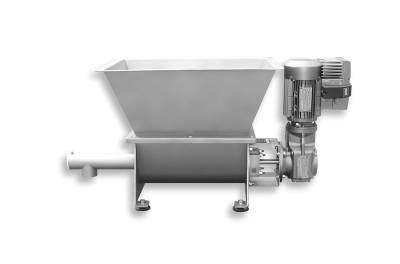Metering feeders control the volume of materials travelling through the feeder funnel. It can be used in industries dealing with fine and coarse materials, from pharmaceuticals to plastics. Here, they are beneficial for maintaining a constant flow of materials. This ensures optimum efficiency in the transport of products. And, as a result, maximizes operational output.
In this article, we’ll explore how metering feeders work and their principles.
Ways of measuring the flow of materials
Metering feeders can work in two ways. First, both are designed to measure and control the flow of materials in different ways.
1. Mass flow meters
Mass flow measures the amount of a substance passing in a given space. A sensor emits a wavelength through the passage where substances flow. This measures how long it takes for the wave to return. If a drop in the mass of particles flows past the sensor, the time taken for the wave to return will change. The sensor is programmed to translate this change into a drop in flow rate.
One of the advantages of a mass flow feeder is that it is not affected by changes in temperature or pressure. This means the feeder can measure flow very accurately. However, problems can emerge when the flow of materials is delayed or have low flow rates, such as with powdered substances. This is because mass flow feeders require precise regulation of overflowing masses. When this is not the case, it can cause inaccuracies.
2. Volumetric flow meters
Volumetric flow is the measure of the space occupied between substances. Feeders use a rotating screw which pushes materials out of the machine. A volumetric feeder is set to expel a specific volume of material during a given period. The rate at which substances are discharged is controlled by the volume and density of materials in the channel. The feeder responds to volume changes by increasing the volume of materials in the channel to ensure a constant flow of materials.
While a volumetric feeder cannot account for temperate and pressure without additional equipment, it has many benefits for bulk handling. It can export bulk solids at a high rate and volume. By utilising multiple feeders in food processing, preparation is easily managed by setting the discharge of materials to recipe specifications. It is designed for continuous discharge, giving products transport optimal efficiency.
Browse metering feeders
View our product portfolio today to learn more about the best in volumetric feeders.









